The second part of Rich Broome’s trip to document one of the most radioactive locations on the planet
Click here to read Part 1
The next day, we board the train back to Chernobyl. Day two takes us to the city in which the power plant is actually located, called Pripyat. Pripyat was purpose-built as a city to house and entertain the families and workers of Chernobyl. The power plant actually gets its name from the original nearby city that was created over eight hundred years prior.
Before we spend most of the day exploring Pripyat, we make a flying visit to the city’s sign and are guided over to a hotspot. Again, it’s an experience to behold, walking towards seemingly nothing, and hearing your Geiger counter beeping faster and faster with every step.
Next we stop for a toilet break, but this toilet break is unusual. Our tour guide opens the door to the bus, points to a building where men dressed in camouflage are walking around with what look like cast-iron caskets. She says: “Right, the toilet is on the first floor of that building. You will find it next to some plastic drapes, do not go through them as it’s a decontamination area”. It turns out the toilets are half a foot from where radioactive clothes get washed.
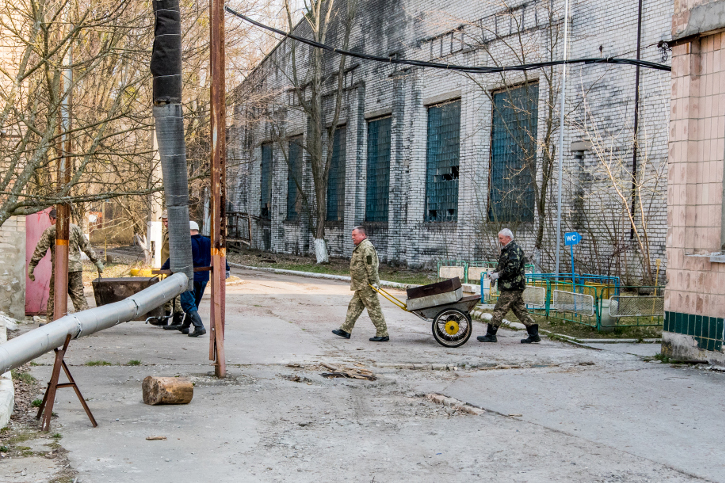
All images by Rich Broome.
Next, we enter one of the city’s main housing estates, where huge sixteen-storey tower blocks stand (or stood). We are told a few things: the first being that if we hear the bus driver tooting his horn, it means the police are nearby and we need to leave. Secondly, that we are strictly not allowed to enter any of the buildings due to their lack of maintenance. The guide swiftly follows this up by saying: “Right, who’s willing to walk up sixteen floors of this building and stand on the roof?” So that’s what we do.
We climb up sixteen dust-coated floors – unable to hold onto the handrail – awkwardly clamber up two very thin sets of steps that are made of rebar and pass through a tiny maintenance door onto the roof. Finally we are met with a cool breeze and an unparalleled, uninterrupted view for miles in every single direction. Mist sits firmly on the early morning’s horizon, that ominous silver sarcophagus sitting right where the sky meets the ground, almost as if it was watching us, reminding us of its ever-looming presence.
Peering over the edge and seeing into the tops of rooms, where the roofs of ten-storey tower blocks have caved in, made the group even more aware of the surface that all eight of us were currently stood on. Something else you can’t help but notice and gaze at is how quickly Mother Nature reclaims what once belonged to her; the streets are heavily peppered with overgrown trees that accentuate the abandoned atmosphere. It is also very quiet. You can hear a pin drop.
Working our way back down, we peel off to look through the huge apartments, each one taking up an entire floor. The door handles have beautiful carvings on them, which would have opened and closed the plush leather button-back doors.
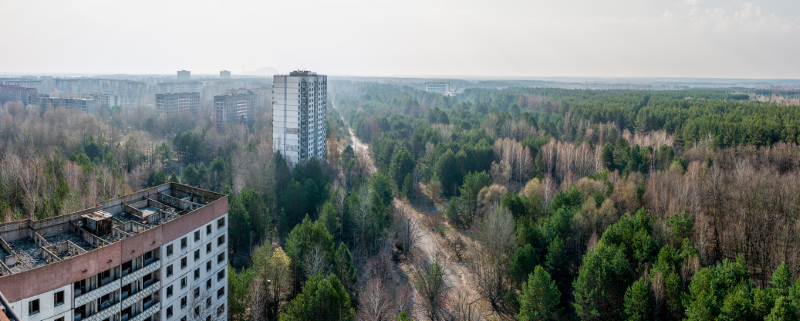
The view from the rooftop.
From district four we travelled to the swimming pool and indoor basketball court. As we stand on the edge of the deep end of the pool, next to the diving boards, our guide shows us a photo that was taken in the same spot nearly fifty years ago, when it was brand new. Next, we travel to the nearby primary school.
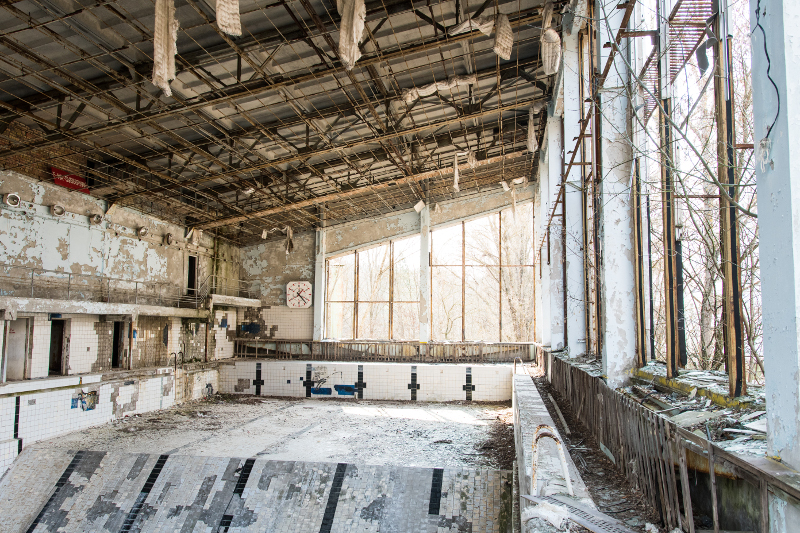
The swimming pool.
The floors of the corridors are covered, several inches thick, in paperwork and books from wall to wall. The classrooms on the first floor have displaced desks, shoes, workbooks and projects. Moving down to the ground floor, the corner of a room is littered with hundreds of gas masks. It’s chilling.
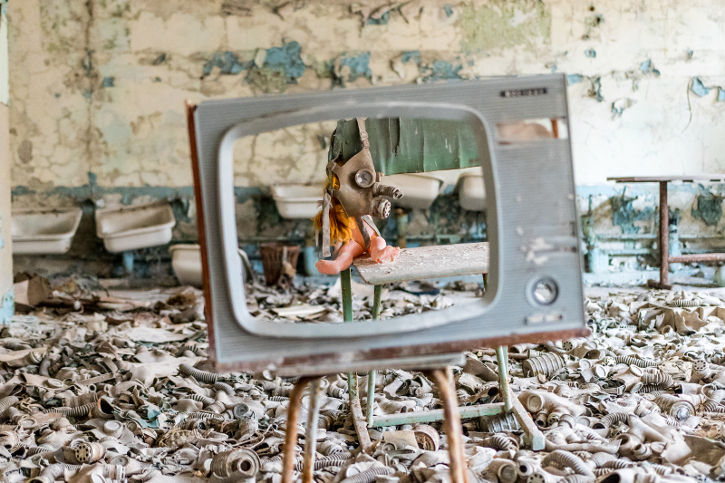
A doll and gas mask, framed through the centre of a blown-out TV.
The next location is the photogenic funfair – with that iconic ferris wheel looming above bumper cars – followed swiftly by a look around the Soviet Union’s first ever supermarket and Pripyat’s main square or city centre opposite. We have timed this trip perfectly, as only five days before the region had been blanketed in deep snow.
We have glorious sunshine and nineteen-degree weather, but despite this, there are still little pockets of snow around. As we enter buildings, we can feel the temperature drop, a chill wafts through the corridors. As we step through puddles, ice-cold water drips from the ceiling, hitting our heads and dripping down the back of our necks. The melting snow and dripping ice really amplifies the feeling of abandonment.
We visit a music school and a cinema that really doesn’t look like it will stand much longer. I ask our guide why the buildings have been left like this; surely it would be in the interest of the Exclusion Zone management to prolong their existence? The mixture of radiation and the cold winters mean it would cost too much money, so the ice is left to tear the buildings apart, which is a huge shame. Our guide reckons that in a few short years, there’ll be more piles of rubble than buildings.
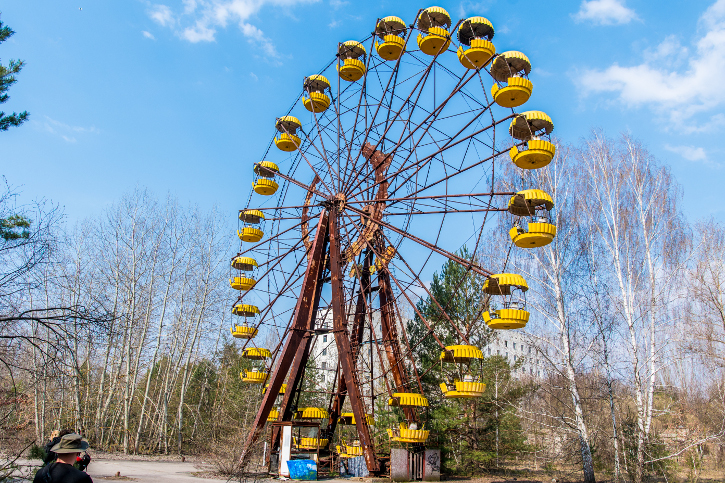
Pripyat's iconic ferris wheel.
Nothing could have prepared us for our visit to the largest kindergarten in Pripyat, and I know I can safely say that it hit every one of us hard. I was on the brink of having tears rolling down my cheeks because, for whatever reason, it suddenly really hit home that people lived here. Young children occupied these rooms and cots, and played with these toys that are now left in such a chaotic and distressed state that you get a real sense of urgency – these people had to be evacuated quickly.
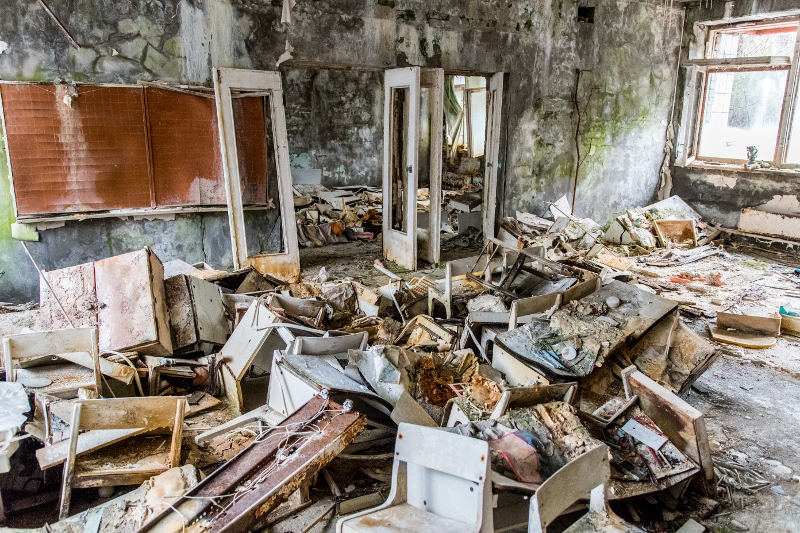
Inside the kindergarten.
Our last building is the hospital. There are still very high levels of radiation, due to the staff trying to treat workers and dumping radiated clothes into the basement. It’s so radioactive that we are – for the first and only time – given breathing masks to wear. Inside, medication is still in its packaging and there’s even a cabbage in a pot of water.
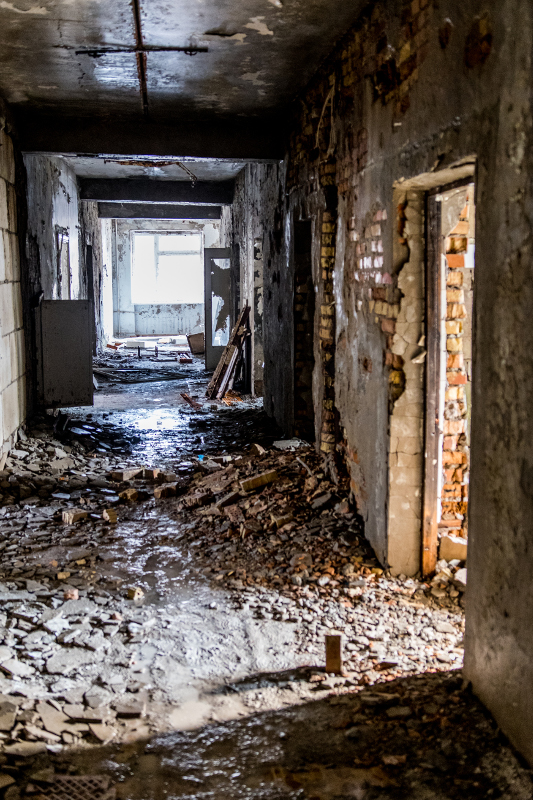
The hospital.
Residents and workers were evacuated en masse, two days after the fire at reactor 4 broke out and all 50,000 would have been exposed without knowing, including those soldiers who went in to try and contain it after the robots failed due to the strain and battering from the radiation.
More than thirty years later, it is still being cleaned up.
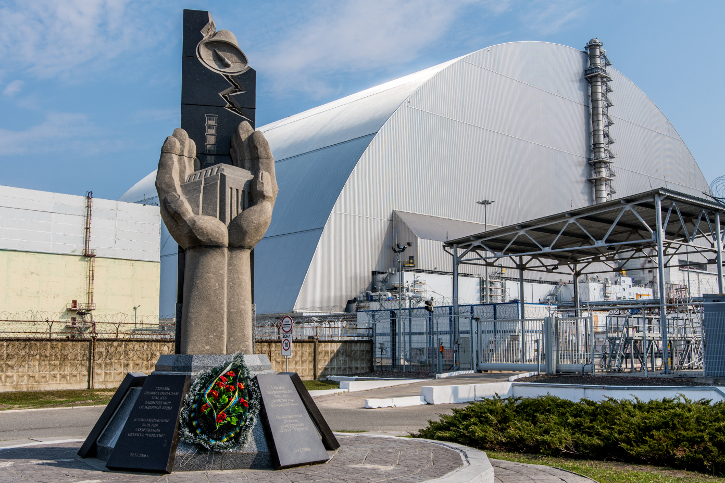
Reactor 4.
About the Author
Rich Broome is a freelance music photographer, formally known as Caperture Imagery. Follow him on Flickr and visit his website.
Related articles
How to Travel with Non-Photographers (Without Being Annoying)
Conquering the Mountains | Six Tips for Travel Filmmaking in Tough Terrain
Chasing the Light in Japan

